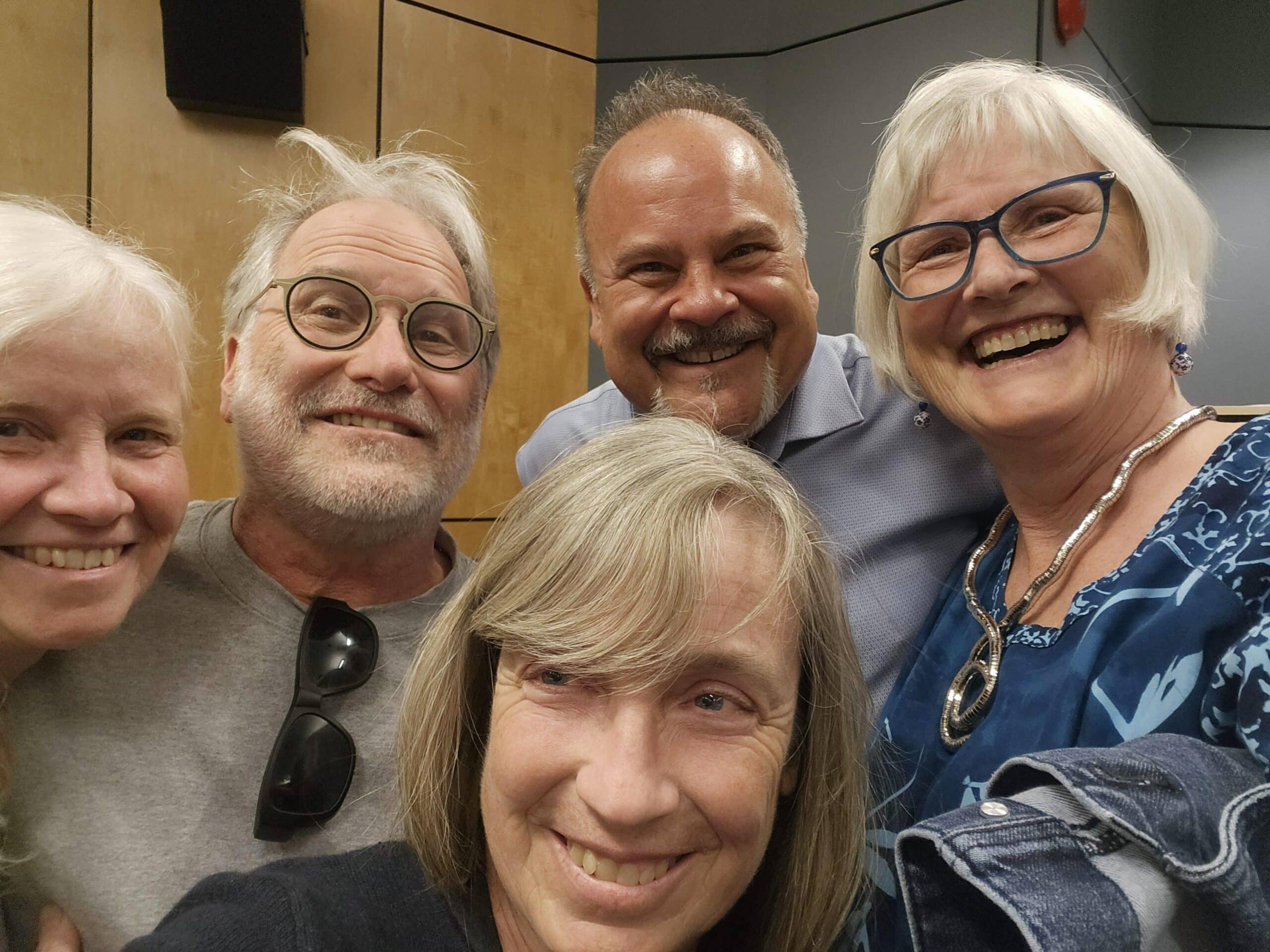We are writing this blog post as an introduction to the care of people in their last days and hours. Our hope is that as compassionate communities continue to grow around the world, that neighbourhoods, circles of friends, and family will feel stronger and more able to meet the needs of those who are dying.
The final days and hours of life are sacred. Sometimes, this is a time of quiet and stillness, and other times it can be a time of struggling to help someone get comfortable in the midst of restlessness, pain, or other symptoms.
For caregivers, families, and even for health professionals, this time can feel layered with emotional intensity and practical considerations alike.
To meet the moment with compassion means to lean into person-centred care. For one person, this might mean holding the environment sacred and quiet, for another it might mean the blasting of favorite music.
Honouring the persons’ dignity will also mean different things to different people. For one person, this might mean limiting the number of visitors, for another it might mean a room of community members gathered to witness the dying, and for still another person it might be the reminiscing of stories and a lifetime of experiences. At the end of the day, it is important to recognize that being there, being present, is usually the most important gift we can give.
Words aren’t always necessary. But when they are, they matter deeply. A soft voice saying, “You’re not alone,” “I’m here with you,” or “It’s okay to rest now” can ease fear for both the dying and those keeping vigil.
Compassionate community care can bring together the talents and skills of neighbours, friends, and professionals to support the dying person and their family. This can help to ensure that no one feels abandoned or isolated.
Recognizing the Signs of Approaching Death
As a person nears death, their body and mind transition. Sometimes this process is a quiet, gentle transition – and for others it can be a more restless journey. These changes are natural parts of the dying process. Knowing what to expect can help your team support, facilitate, and offer comfort.
These are the common physical changes that a person may experience during their last days and hours:
- Decreased physical strength and increased drowsiness
- Reduced food and fluid intake, difficulty swallowing, and eventually inability to swallow
- Delirium or confusion
- Agitation and/or restlessness
- Moments of unexpected clarity or lucidity
- Unresponsiveness
- Irregular breathing – shallow breaths, extended pauses, or periods without breathing
- Moist, congested-sounding breathing
- Changes in skin colour (mottling, pallor) and temperature (cooling of extremities)
- Muscle twitching or involuntary movements
- Dry, sunken eyes
- Lack of urinary output and/or bowel or bladder incontinence.
People nearing death may also express emotional and psychological vulnerability. For some people, the transition is not as peaceful, and may include periods of confusion, restlessness. Connect with the health care provider if confusion, restlessness, moist breathing, or difficulty breathing occur.
A calm tone, soothing touch, and reassurance can help both the dying person and those present to feel more at peace.
How Can I Support the Person and Their Family?
In the final days and hours, comfort becomes the focus. For every change, consider how to support both the dying person and their family. For example, when the person is not able to swallow fluids, provide mouth care and help the family to provide mouth care. When the person is increasingly weak and unable to turn and reposition themselves, adjust and reposition them every few hours. This does not need to be major turns, but just turning enough so that the pressure is not on the same areas continually.
Listening Without Attempting to Fix
If the person or their family expresses powerful emotions, when they cry, sob, yell, express regret or fear… it is natural to want to help, to want to “fix-it”. We sometimes call this the “fix-it trap”. The most powerful, helpful, supportive thing to do is to listen, to witness. Being present, without judgment, without quick solutions, will help the person and the family feel heard and supported.
For the Person
When caring for someone in their final days and hours, let them be your guide, adjusting your support to align with their preferences and current abilities. As the body begins to slow, expect a natural decrease in intake and difficulty with swallowing. You will support the person to move gradually from solids to fluids, to clear fluids, then from drinking to small sips, and ultimately to providing only mouth care. Gently remind them to swallow if needed. When swallowing is no longer possible, stop offering food or drinks and shift to focused, comfort-based mouth care using swabs.
Create a soothing environment if appropriate. Soft lighting, gentle sounds, and a reassuring touch can help foster calm and a sense of safety. Be attentive to the person’s spiritual and cultural needs, which may include meaningful practices like prayer, specific rituals, or keeping sacred items nearby. Remember however, the person who wanted their favorite music playing!
Speak directly to the person, using respectful and adult-appropriate language. Avoid elderspeak or infantilizing phrases unless they’ve clearly been preferred by the person. Offer gentle, affirming words like “I’m here” or “You’re safe now,” and validate their emotions, whether they’re spoken or quietly expressed. Your tone, your presence, and the intention behind every interaction are as meaningful as the care itself.
For the Family
When someone is nearing death, it’s not just the dying person who needs care – their family does too. Carers and compassionate communities can play a vital role in family support during this time of deep vulnerability. Gentle conversation, shared presence, and practical support can all help the family.
Reassure loved ones that talking to the dying person is okay, even encouraged. Hearing is believed to be the last sense to remain. Soft words, treasured stories, or heartfelt expressions of love may still reach the person, even if there’s no visible response. This isn’t just about care, it’s connection. And through connection, healing can begin, even as life comes to an end.
Supporting natural physical changes, like reduced intake or difficulty swallowing, can be emotional. Families may associate eating with survival, and letting go can feel overwhelming. Invite them into the moment with questions that foster comfort and involvement: “Would you like to help with care?” “Are you comfortable just sitting with your mom?” “Can I sit with you for a while?” “What did you and your father enjoy doing together?” “Would you like to read, share stories, or play music?”
Listen attentively to the family’s concerns and validate the difficulty of letting go. Explain the comfort and dignity that mouth care can offer. Gently demonstrate how to provide it, inviting participation if and when it feels right.
Encourage the family and the community to speak openly with the healthcare team.
These simple, compassionate acts allow families to be part of the care in ways that may be very meaningful and healing.
When Death Occurs – The Final Acts of Care
The moment of death can feel sacred, sad, peaceful, freeing…. It can be a time of deep reverence.
- Caregivers may observe the person’s final breath, a shift in colour or body temperature, or sudden stillness.
- Respond with calm and dignity.
- Honour chosen rituals – silence, prayer, music, presence.
- Guide families gently through the next steps – emotionally and practically.
When the Body is Removed
For some people, when the body is removed from the home, their residence in long-term care or the hospital room, it can feel more final, more difficult than the time of death itself. Prepare the family and those attending the death, that they might experience this as really difficult. They might want to be present or they might want to remove themselves when the body is removed. This is not a “test”.
The family/community might consider a ritual to occur when the body is removed. For example, putting a favorite quilt on the body and flowers by the persons’ head, and then playing a favorite song as the body leaves the home. Or, the community might want to hold candles by the walkway, and have the family walk the persons’ body out.
In the past few years, more people are choosing to provide care for the body, following death. This may include the sewing of a shroud, the building of a coffin, and the delivery of the body to the crematorium, cemetery etc.. This is a focus of another blog post!
Planning for Death
Whilst we can’t control when natural death arrives, we can prepare thoughtfully how to meet it.
It’s important to plan for the final moments and the time immediately after death. This preparation can help to honour the person’s values with care and confidence.
Having conversations and making decisions ahead of time can also ease the emotional weight on loved ones, helping reduce stress and uncertainty. Planning doesn’t take away the pain, but it can help reduce crisis and confusion.
Developing a Plan for the Time of Death
Consider the following when planning for the time of death of a loved one:
- Explore what the person might want – choices that reflect their values, loves, and spiritual or cultural traditions.
- Ask – who might the person want to be present when death is near? When death occurs?
- Who would they like to be notified when death is near? This may include distant relatives, community elders, or spiritual advisors.
- Learn if there are preferences for music, poetry, prayer, scripture, or other meaningful elements to be included in the dying process.
- Arrange support and resources in advance – ensure the family knows who to call 24/7 if the person becomes uncomfortable or if urgent questions arise.
Developing a Plan for After Death
After death occurs, there is no need to rush. These moments are part of the journey, and taking time can offer space for reflection, connection, and peace.
This can be a time to:
- Sit quietly with the person, becoming accustomed to the stillness of their body
- Share stories and memories, or simply be together in silence
- Offer comfort to the family – tea, small bites to eat, a blanket, tissues
- Gently bathe the body if desired, or tidy the room to create a peaceful environment
- Light a candle, play music, or invite ritual and prayer.
If Death Occurs at Home
Is there an “Expected Death at Home” form that can be completed in advance to avoid unnecessary emergency interventions? Who will need to pronounce the death – healthcare staff, hospice nurse, or designated physician? Confirm this ahead of time to reduce stress in the moment.
Who Needs to be Notified?
Who needed to be notified, and who should make those calls – discuss this in advance…..
- Close friends, family members, or chosen spiritual leaders
- Health care professionals, including those involved in palliative or hospice care
- Funeral home or chosen service provider
- Legal or governmental offices, depending on jurisdiction.
The Power of Presence and Compassionate Community Care
In the final days and hours, the most powerful gift caregivers offer is presence. There’s no perfect way to do this – but being there, witnessing, holding space, opens the door to many possibilities.
- Allow room for emotional reflection and resilience.
- Remember that the dying process will not follow a script.
- Recognize the profound privilege of walking alongside someone in their final journey, and the way compassionate community care can support both families and caregivers in these moments.
Be present. Be calm. Breathe. Even silence, when held with kindness, is a language of care.
Families and caregivers walk a delicate road. The grace they offer in those moments lives on long after the final breath.
To everyone who shows up with presence and compassion: Thank you.







